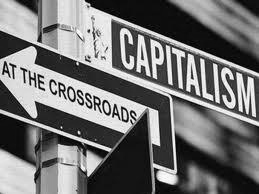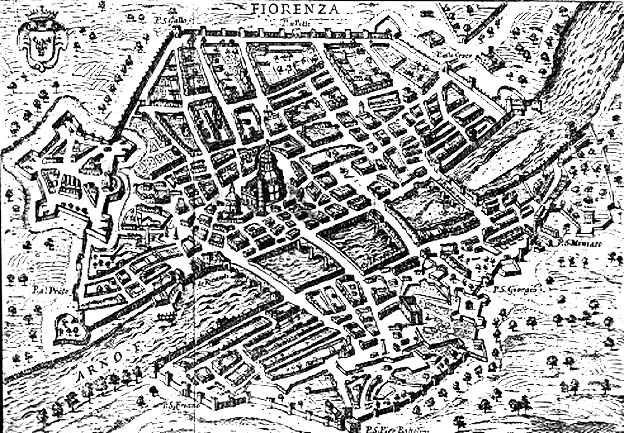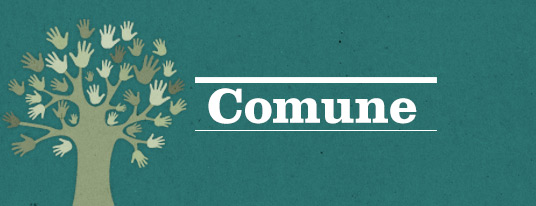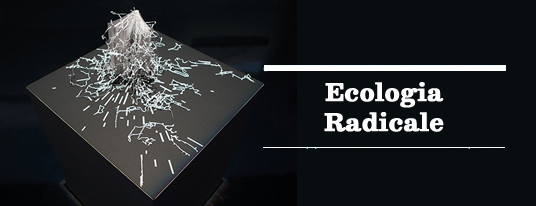di SANDRO MEZZADRA and BRETT NEILSON.
Pubblichiamo l’introduzione di S. Mezzadra e B. Neilson al numero speciale appena uscito (1/2015) di South Atlantic Quarterly dedicato a Extraction, Logistics and Finance, che vi segnaliamo per la particolare utilità dei materiali nel dibattito su neoestrattivismo, finanziarizzazione e produzione del comune. Il numero sarà presentato a Bologna martedì 17 febbraio, presso MODO infoshop.
Extraction, finance, and logistics provide strategic conduits of analysis to unearth key logics and trends that otherwise remain obscured in discussions of contemporary capital and capitalism. In this sense, they are more than important sectors through which to observe emerging dynamics shaping the current capitalist transition and its uneven global scope. Many analyses that make reference to the concept of neoliberalism in a generic sense point to the hegemonic circulation of economic doctrines or processes of deregulation and governance without really taking stock of the underlying transformations of capitalism that we try to highlight by focusing on extraction, finance, and logistics. Crucial to our analysis is the concept of operations of capital, which draws attention to both the material aspects of capital’s intervention in specific situations and their wider articulation into systemic patterns. The need to move toward such an analysis becomes particularly urgent in the context of the crisis of 2007–8. While the hegemony of neoliberal economic doctrines has definitely been questioned (and in some cases even shattered) by the turbulent pace of the crisis, the trends we analyze have only been entrenched. By bringing together in this issue studies of finance, extraction, and logistics, we do not mean to imply an easy synthesis of potentially incongruous perspectives; rather, we wish to highlight the need to work through these different angles and analytically probe their conceptual and empirical intersections in ways that complicate and enrich our understanding of how contemporary capitalism is mutating in and beyond its returning crises.
An analysis of processes of financialization provides a privileged avenue to grasp the novel elements and mutations in capitalist regimes of accumulation, distribution, exploitation, and extraction. Beyond descriptions of financial market trends and technologies, there is the ongoing and violent tendency of finance to penetrate and subsume economic activity and social life as a whole. The unfolding of the crisis and its management have only entrenched this tendency. Financialization has produced, but also faces, a new landscape, making it necessary to rethink arguments about globalization, the relevance of territory and space, the role of the state, structures of governance and legal orders, and the relation of capital to labor and social cooperation. The analysis of financialization must account for the material interfaces and multifarious devices through which finance “hits the ground.” By focusing on the techniques finance uses and the limits it encounters in its voracious quest to permeate nonfinancial domains, what becomes evident is the need to multiply empirical points of entry and to complexify the conceptual framework for the critical analysis of contemporary capitalism. As much as financialization exceeds the boundaries of a specific economic “sector,” extraction and logistics cannot be confined to limited realms of activity. As we have argued elsewhere (Mezzadra and Neilson 2013), extraction and logistics are crucial to the working of the contemporary capitalist world due to their expansive global scope, underlying rationality, and capacity to violently disrupt and fabricate space, territories, and lives.
Extraction refers literally to the forced removal of raw materials and life forms from the earth’s surface, depths, and biosphere. While these activities are by no means historically new, they have reached unprecedented and critical levels as the rush to convert materials, both organic and inorganic, into value has escalated with expanding populations, new technologies, and green horizons of capitalism. The sharp increase of land grabbing—through the sequestration of arable farmlands and clearing of forests for the production of biofuels and foodstuffs—is only one feature of this contemporary landscape of extraction, which extends well beyond activities such as mining, oil drilling, and fishing. Important processes of capitalist valorization such as those linked with the gentrification of urban spaces can also be critically analyzed as forms of extraction. Logistics, by contrast, is the art and science of organizing the turnover of capital to maximize efficiencies of transport, communication, linking, and distribution. Although the coordination of productive and distributive processes has always been a feature of capitalism, the development of global chains and networks of production and assembly has blurred the lines between production and distribution through the movement of components, people, and knowledge across heterogeneous global sites. The technical identification of industrial locations, zones, and hubs through calculations that balance the cost of labor against the cost of transport has become a crucial means of fabricating topographies of work and productivity. The enabling of such logistical processes through infrastructural installations and interventions, both in the realms of hardware and software, has emerged as a vital area of capitalist activity with a capacity to shape economic and social futures through variable patterns of path dependency and an alchemy of algorithms, data, concrete, and steel.
It is easy to see that extraction and logistics are mutually implicated. Likewise, their intertwining with financial markets and processes of financialization is readily observable. Just think of how the financial manipulation of commodity prices influences the workings of extraction, whether through the opening of scars on the earth’s surface to extract valuable minerals or through the elaborate systems of emissions trading that aim to minimize the production of carbon dioxide in the earth’s atmosphere. As far as logistics is concerned, we can see the expansion of the application of its rationality in the financial sector, particularly through the varieties of software and the infrastructural skeleton of fiber, servers, and screens that undergird the latest wave of high frequency trading. At the same time, logistical worlds are deeply permeated by the logics of finance, evident for instance in the way that the indexing and spot pricing of container routes influence decisions about the where and why of global transportation. It quickly becomes clear that an analysis of contemporary capitalism can be advanced by privileging the operations of extraction or logistics in the same way that arguments about financialization emphasize the operations of finance. In Latin America the concept of “neoextractivism” has provided a critical lens through which to view wider transformations of capitalism even under so-called progressive governments (see the article by Maristella Svampa in this issue). Similarly logistics has entered the vocabulary of critical theory in order to focus attention on the sophisticated technologies of coordination and distribution that are crucial aspects of contemporary capitalism (see, e.g., Tsing 2009; Harney and Moten 2013; Cowen 2014 as well as the article by Ned Rossiter in this issue). Far from seeing these approaches as mutually exclusive critical paradigms, we see opportunities for them to work in consonance.
In this sense, extraction, logistics, and finance provide points of entry for renewing the debate about the changing forms of economy and society under capitalist globalization. Doubtless these are not the only possible analytical levers that can be applied to the present situation. There have been multifarious attempts to identify similar sectoral domains or fractions of capital to motivate and guide the investigation of the changing systemic logics of capitalism. Over a decade ago, Beverly Silver (2003) singled out a number of emerging “industries” that promised to provide a leading “product cycle” after the decline of the global prominence of automobile production: the semiconductor industry, producer services, the education industry, and personal services. We do not want to deny the importance of such branches of economic activity. What we seek to carve out of an analysis of extraction, finance, and logistics is not solely an understanding of the workings of crucial economic “sectors” or cycles. Rather, we aim to shed light on principles or logics that increasingly play an important role in driving the development of other sectors, including those mentioned by Silver. In this regard, our perspective is quite close to the recent work of Saskia Sassen (2014). “Are there a few logics,” Sassen asks, “that drive what on the surface becomes present as enormously diverse worlds—the world of fracking, the world of finance, the world of the logistics for outsourcing?” (220). We are convinced that such logics exist and that it is worthwhile to not only conceptually define them but also to empirically map the variable geometry and geographies of their steady expansion. This is definitely connected with the working of “expulsions,” to recall the title of Sassen’s (2014) book, but it also requires the distillation of new forms and codes of “incorporation” that articulate and traverse the opening of literal and metaphoric spaces for the accumulation of capital.
To understand and trace these new forms of incorporation it is necessary to move away from a normative and periodic understanding of inclusion as the characteristic feature of the Keynesian social state. This is not to deny that the concept of inclusion gives some analytical purchase for the description of various social dynamics, for instance, in the realms of welfare, education, and immigration. However, the understanding of inclusion as an unambiguous social good obscures important tendencies that were already apparent in the Keynesian era but have become much more pronounced under neoliberalism and globalization. Violence is not confined to exclusion and expulsion; it is also ingrained in patterns and processes that differentiate and hierarchize the ways in which subjects are made and included in spaces of citizenship, labor markets, and social cooperation. While a unilateral focus on “expulsions” paradoxically reinforces the stability of these spaces, paying attention to the blurring of the boundaries between inclusion and exclusion, inside and outside, brings to the fore the multifarious contestations and con- flicts that emerge precisely on these boundaries. The current expansion of the frontiers of capital continuously touches on these tumultuous tensions of inclusion and exclusion. Indeed, Sassen describes the “systemic edge” as “the site where general conditions take extreme forms precisely because it is the site for expulsion or incorporation” (211). This is an important realization that highlights how the tensions between “expulsion” and “incorporation” are always at stake in the systemic expansion of capital. Nevertheless, what counts more today is not the binary alternative, the “either/or,” between “expulsion or incorporation,” but the merging and contamination that characterize their deployment in the production of new societal and political codes as well as related forms of subjectivity. This is what we hope to highlight in the analysis of processes of extraction, logistics, and finance.
An important conceptual tool for this analysis is the notion of operations of capital. The syncopated pace of opening and closing, inclusion and exclusion, that shapes the encounter of capital with a heterogeneous array of social and spatial formations, makes evident the dynamics of dispossession, exploitation, and accumulation. We have previously discussed the philosophical and theoretical implications of the concept of operation, which is important to distinguish from notions of labor on the one hand and practice on the other (Mezzadra and Neilson 2013). What interests us here is how highly sophisticated techniques and technologies of knowledge and calibration impinge upon the social relation of capital that continues to dominate contemporary forms of life and cooperation, notwithstanding its multiple mutations and fractures. While any operation exists within a wider network of operations, it is heuristically possible to isolate the moment of specific material operations in order to analytically highlight the violence that haunts and issues from refined and abstract methods and paradigms of valorization. The operation, in this sense, is a moment of connection and capture that exhibits the materiality of even the most ethereal forms of capital. This gives us a new avenue by which to approach contemporary processes of abstraction as well as the global nexus of price and the continued mutual implication—so effectively analyzed by Marx (1971: 253)—of “abstract labor” and money on the world market. Too often the analysis of finance and logistics is separated from any sense of their material effects, while discussions of extraction emphasize brutal moments of grabbing, drilling, or appropriating. The concept of operation allows us to see the “extractive” dimensions of finance and logistics as well as the calculative and immaterial conditions of extraction. It is precisely this intertwining of heterogeneous modes of extraction with the seemingly metaphysical qualities of contemporary abstraction that characterizes some of the most crucial operations of capital today.
Despite this emphasis on the intertwining of abstraction and materiality, it should by now be clear that we approach extraction, finance, and logistics as contiguous and interrelated domains for the analysis of current capitalist transition. In our understanding, transition points to open futures that are nonetheless constrained by systemic features whose critical description requires something more than the aggregation of social and economic inequalities on graphs and pie charts. It is certainly possible to discern longterm continuities in the development of capitalism while also stressing the discontinuities and ruptures that have shaped it since the early 1970s or 1990s. Whether one emphasizes the end of the Bretton Woods agreements or the collapse of actually existing socialism, there is a need to attend to emerging dynamics of dispossession and exploitation. The point is not only about the continuing mutations of “primitive accumulation” that have been hastened by the dynamics and management of the crisis—be they manifest in subprime mortgages, land expropriation, the enclosure of “public goods” crystallized in welfare systems, or the logistical shift of jobs and livelihoods to locations where the cost of labor is ever cheaper. In all these cases the operations of capital take on a pronounced “extractive” dimension.
We seek also to highlight emerging processes of exchange and exploitation that open new circuits of accumulation by working the gaps between different terrains of space and time and deploying novel combinations of energy and force. If one thinks about the new technologies of speed that have revolutionized financial markets or the economies of energy efficiency that logistical techniques bring to global shipping through “slow steaming,” it is possible to get a sense of the radical discontinuities of rhythm that characterize attempts to identify operative exits from the crisis. The growing sophistication of data mining and sharing techniques that build efficiencies in supply chain management goes hand in hand with the continuous multiplication of spatial zones and territories that organize workforces that can be played against each other even as they are forced to cooperate. These dynamics necessitate the invention of new strategies of struggle, alliance, and translation adequate to the production of subjectivities capable of working across these discontinuities and heterogeneities in antagonistic and liberating ways.
Using the concept of operations of capital also opens a new angle for the critical analysis of the relation between capital and capitalism. An operation always refers to specific capitalist actors while also being embedded in a wider network of operations and relations that involve other actors, processes, and structures. This gives us two analytical avenues through which to examine the work done by an operation. The first, with its reference to specific capitalist actors, reveals the workings of capital in particular material configurations, shedding light on processes of valorization as well as on the frictions and tensions crisscrossing them in lived and grounded circumstances. The second focuses on the articulation of operations into larger and changing formations that comprise capitalism as a whole. In this latter view, questions of sociological description, ideology, the role of the state and other agencies of power and governance, and even cultural dynamics of hegemony remain relevant. However, the interpretative difference made by the concept of operations of capital cannot stay fixed on this plane because the interruptive opening made by attending to the specific material effects and contexts of capital’s operations introduces other dimensions and lines of investigation. Whether one subscribes to a network or assemblage model of society or to a vision of capitalism as a totalizing system, this moment of interruption exposes constitutive fault lines and struggles that compel a different kind of analysis. The way capital and capitalism hit the ground has profound implications for both analytical avenues opened up by the concept of operation. Through our analysis of extraction, finance, and logistics we aim to highlight a set of operations that play increasingly relevant roles in the composition of contemporary capital and in the uneven workings of capitalism on a global scale. Moreover, these operations are characterized by features that resonate with other operations of capital beyond extraction, finance, and logistics. The intertwining of the “extractive” dimension of capital with the intensification of abstraction we mentioned above points precisely to these features.
Logistics and finance in particular are driven by and produce fantasies of smoothing out the world by eliminating friction and resistance. The absolute sovereignty of capital they project is perhaps the most tenacious and hyperbolic of these fantasies. Even extraction, which is deeply rooted in the mire of drilling and excavating, is increasingly characterized by the promissory rhetoric of cleanliness and environmentalism. In the latest forms of “data mining,” whether associated with social media or industrial and even military applications, we see processes of extraction that aim to anticipate behaviors and trends and thus achieve a seamless integration of the present with the future. Critically looking at extraction, logistics, and finance through the angle of their operations allows us to see not only the ways in which they are susceptible to various processes of friction and lubrication but also the unevenness of their distribution and functioning across the heterogeneous scales and borders of global space and time. There can be no doubt that there exist zones, hubs, regions, and even continental spaces where the intensity of these operations is concentrated in particular and strategic ways. Logistical hubs, extraction enclaves, and financial precincts in global cities are just some examples of such spatial formations. Likewise, there are sites and even vast territorial expanses where the reach of these operations is weak or implied only through control from a distance. Navigating this variable geometry is essential for both conceptual and empirical investigations of extraction, logistics, and finance. In particular, the theoretical and ethnographic probing of seams and junctures where the interoperability of different systems and techniques breaks down provides a way of discerning and analyzing the shifting formations within which the social relation of capital is both reproduced and contested.
The global scope of the operations of extraction, logistics, and finance cannot be thought without attention to the uneven and heterogeneous patterns they create in specific material circumstances. This is not to affirm a global predicament of chaos and disorder but to provide an analytical and political frame within which to set parameters for observing the logics and drivers of global processes and transitions today. Whether through an investigation of specific operations of capital or a wider scanning and tracking of their articulation into complex networks and formations of capitalism, the point is to isolate a set of features and problems that manifest themselves in the diverse domains and landscapes traversed by the processes of capitalist valorization. Such isolation cannot be accomplished without a simultaneous focus on the limits of these processes, which mark the impossibility of capital affirming itself as a self-sufficient totality at the same time as they produce an unbalanced configuration of forces. Once such an analysis is in place, we can begin to ask questions about how capital and capitalism reshape their relation with politics. This means both investigating the shifting roles of states and other agencies of governance and bringing into relief the heterogeneous ways in which the struggles of exploited subjects challenge and exceed emerging formations of governance and capital in many parts of the world.
*************
The articles in this special issue explore different lines of conceptual analysis and empirical investigation at the intersection of extraction, logistics, and finance. Each contributor traverses this intersection in a partial way, giving the individual pieces a unique depth that cumulatively adds to the conceptual power of the whole. Verónica Gago, Manuela Bojadžijev, and Giulia Dal Maso explore from different points of view and global locations how the dynamics of financialization affect patterns of urban living and struggle, popular economy, and institutional settings. Maristella Svampa, Sharad Chari, and Brenda Chalfin provide powerful accounts of the heterogeneous extractive operations of capital in Latin America and Africa. The article by Niccolò Cuppini, Mattia Frapporti, and Maurilio Pirone takes the extraordinary organization of workers’ struggles in the logistics sector of northern Italy as an occasion to analyze the changing valence of logistics within wider capitalist landscapes. Ned Rossiter pursues a related analysis by asking how sophisticated software systems deployed by corporations and universities aim to level out possibilities for resistance within restrictive frames of measurement and surveillance. The final two articles, by Ishita Dey and Giorgio Grappi and by Sven Opitz and Ute Tellmann, explore the spatial dimensions of contemporary infrastructural installations from a viewpoint that emphasizes questions of political collectivity and industrial development. Taken together, these pieces help complete the larger jigsaw puzzle of finance, logistics, and extraction against the backdrop of the operations of capital and contemporary capitalism.
References
Cowen, Deborah. 2014. The Deadly Life of Logistics: Mapping Violence in Global Trade. Minneapolis: University of Minnesota Press.
Harney, Stefano, and Fred Moten. 2013. The Undercommons: Fugitive Planning and Black Study. Wivenhoe: Minor Compositions.
Marx, Karl. 1971. Theories of Surplus-Value. Moscow: Progress.
Mezzadra, Sandro, and Brett Neilson. 2013. “Extraction, Logistics, Finance. Global Crisis and the Politics of Operations.” Radical Philosophy 178: 8–18.
Sassen, Saskia. 2014. Expulsions: Brutality and Complexity in the Global Economy. Cambridge, MA: Harvard University Press.
Silver, Beverly. 2003. Forces of Labor: Workers’ Movements and Globalization since 1870. Cambridge: Cambridge University Press.
Tsing, Anna. 2009. “Supply Chains and the Human Condition.” Rethinking Marxism: A Journal of Economics, Culture, and Society 21, no. 2: 148–76.

















